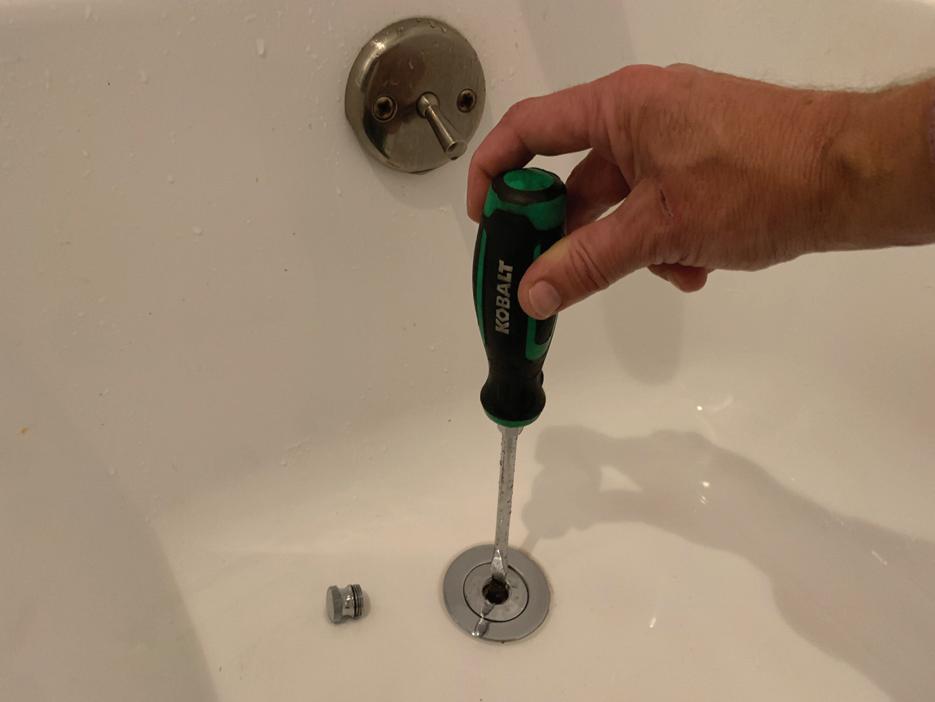
4 minute read
STEP-BY-STEP HANDBOOK
REPAIR A TUB SPOUT DIVERTER
By Tom Matthews
In a tub and shower combo, the diverter is the device that switches the flow of water from the tub spout to the shower spout and back again.
It is a simple device inside the tub spout that usually consists of a small chrome-plated handle, a plastic gate, and a rubber washer that seats inside the gate.
DIVERTER COMPONENTS
Over time, the components can wear out or minerals can build up and cause the diverter to malfunction, resulting in leaks or making it difficult to operate.
The good news is this is a simple, inexpensive repair that any DIY’er can complete, and it’s not even necessary to shut off the water supply lines.
Step 1: With the tub valves turned off, use a sharp utility knife to cut through the silicone seal where the spout meets the shower wall. Step 2: Turn the spout counter-clockwise to unthread it and remove it from the outlet. If necessary, use a pair of Channellock pliers (while protecting the spout with a cloth) to loosen the connection.
Step 3: Hardware stores sell replacement spouts with the diverter preinstalled ($25-$30), however the replacement spouts are often made of a thinner, flimsier metal than the original hardware, so many homeowners prefer to repair the diverter and keep the original spout.
Step 4: Inspect the diverter and spout for damage. The washer may have fallen out, the plastic gate may have broken, or the handle might have gotten bent. In the case shown, the gate was intact but limescale and mineral buildup inside the pipe was preventing the gate from opening and closing properly.
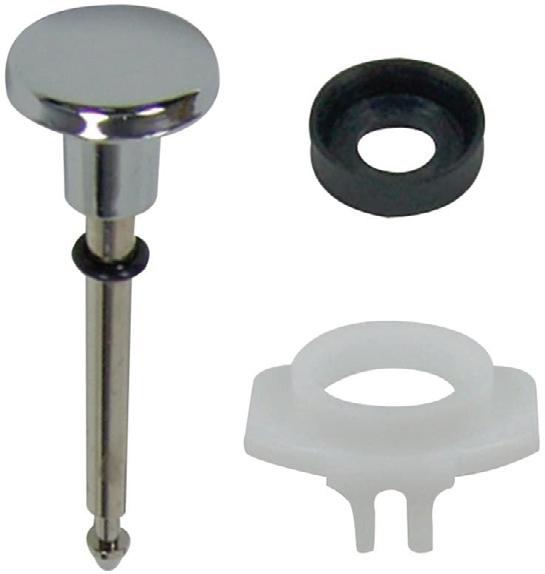
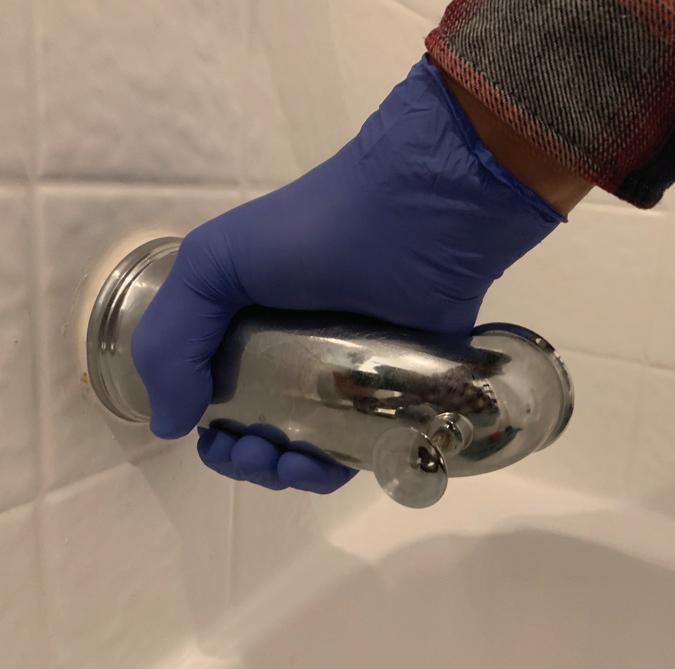
1 2
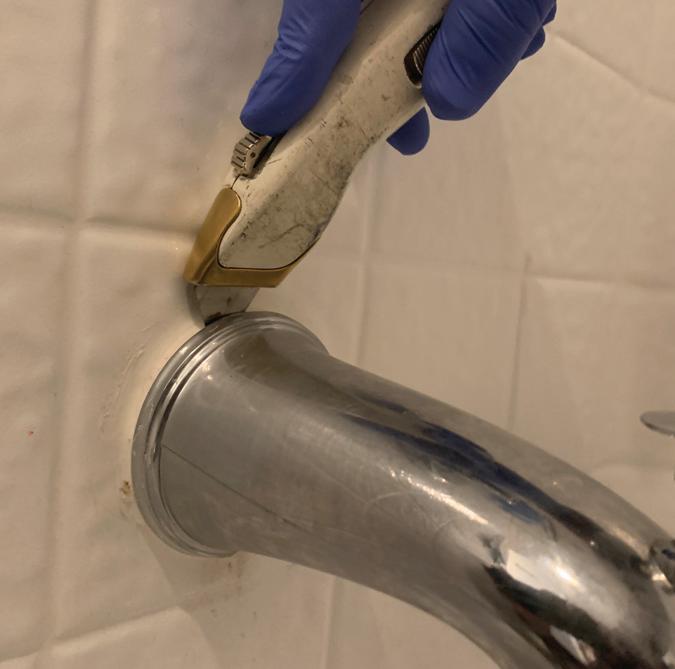

3 4
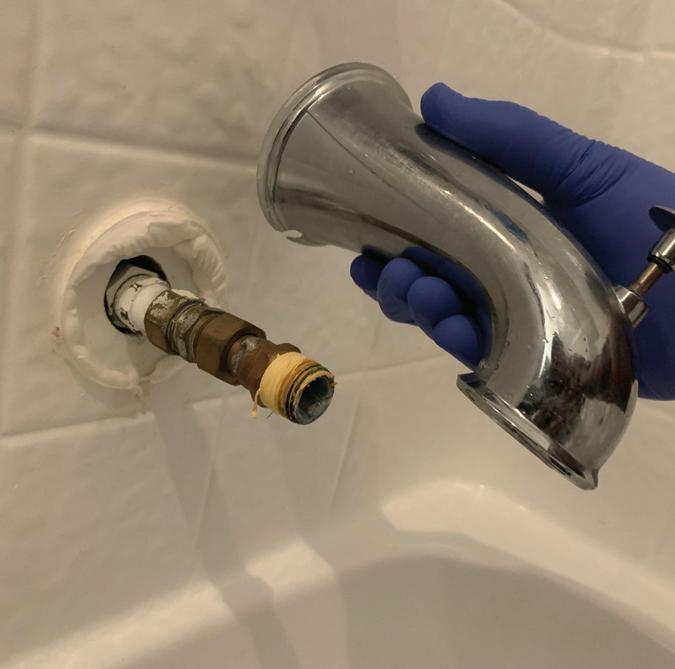

5 6
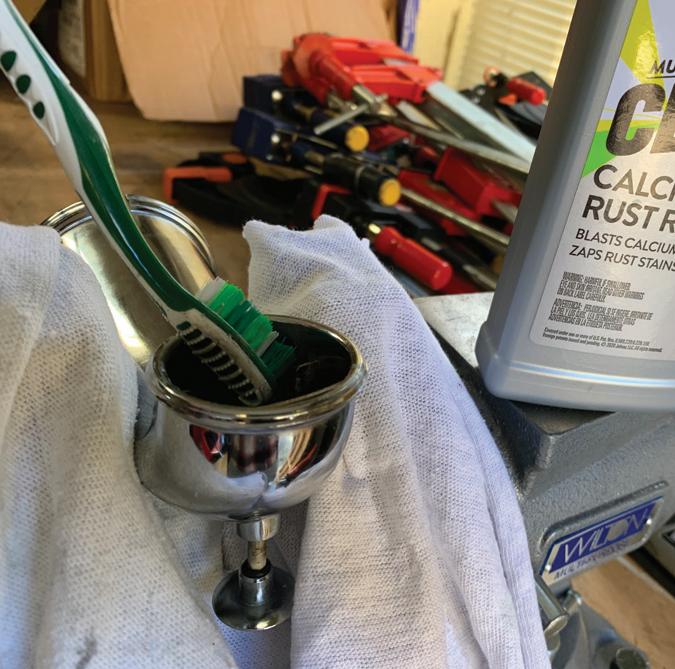
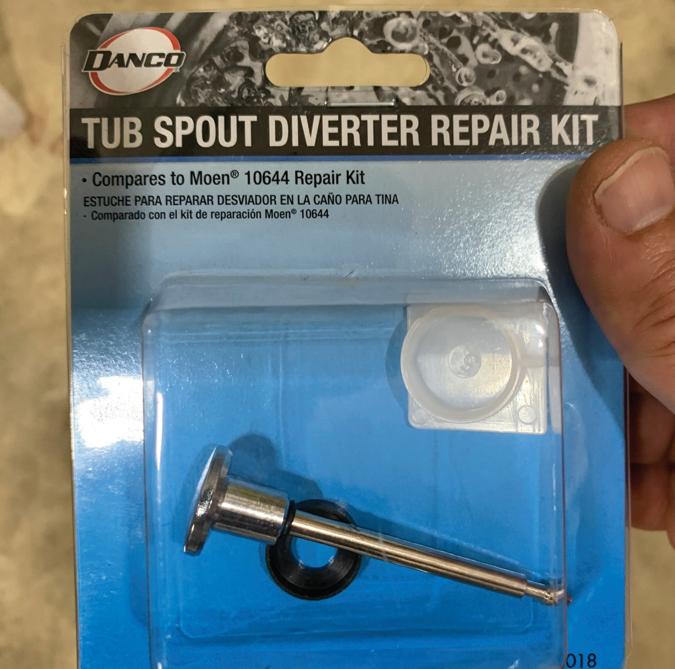
7 8

Step 5: Clean the spout thoroughly with an abrasive brush and CLR (calcium, lime, rust remover). Step 6: Although the diverter was intact on this spout, the mineral buildup made it inoperable and required more than a simple scrubbing. To solve this problem, I used a sanding drum on a Dremel to grind away the buildup and smooth the interior metal surface so the gate would have less friction, more room, and an easier path to travel. Step 7: The round shape of the drum made it impossible to sand inside the tight corners, but a thinner grinding bit was able to reach the remaining buildup inside the spout. I alternated the sanding/grinding process with repeated applications of CLR until the metal was smooth enough that the gate moved freely up and down by pulling on the handle. Step 8: “Tub Spout Diverter Repair Kits” contain a replacement handle, gate and washer, and are available at hardware stores ($5-$7). The plastic gates come in small square sizes or larger oblong sizes (which are more common). The larger sizes can usually be sanded down if necessary to fit inside a spout, but if the gate is too small for your spout, it won’t work. Step 9: If you need to replace the diverter, use needle-nose pliers to snap off one of the ears that clip the gate onto the handle, then slide the handle out of the spout and remove the pieces. Slip the new handle through the spout hole and reassemble the diverter with new gate and washer.
Step 10: Before replacing the spout, use a wire brush to remove any leftover gunk or old thread tape from the outlet connection.
Step 11: Use CLR and a pipe-cleaning brush or similar tool to thoroughly clean the inside and outside of the outlet pipe.
Step 12: Wrap a couple layers of thread-seal tape (in a clockwise direction) over the connection to prevent leaks.
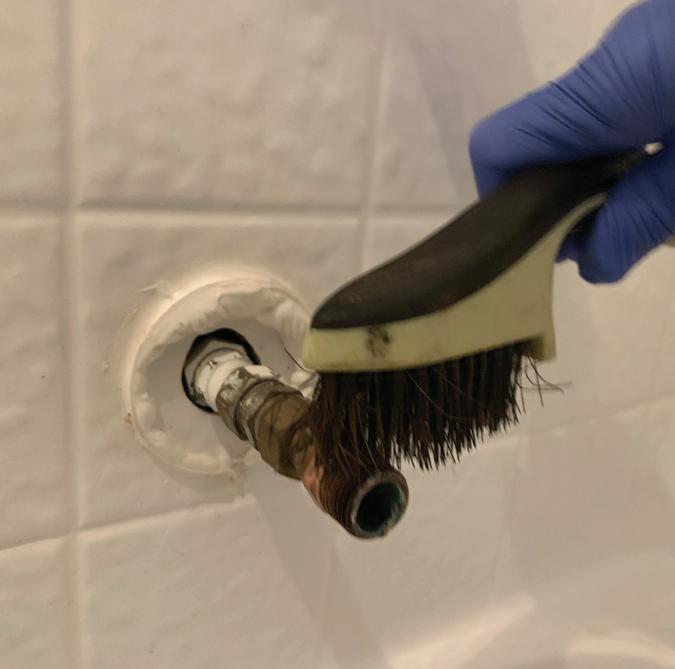
Step 13: Screw the spout tightly onto the outlet, orienting the mouth toward the bottom, then seal the wall connection with a quality, flexible caulk/sealant intended for kitchen/bath applications.
H
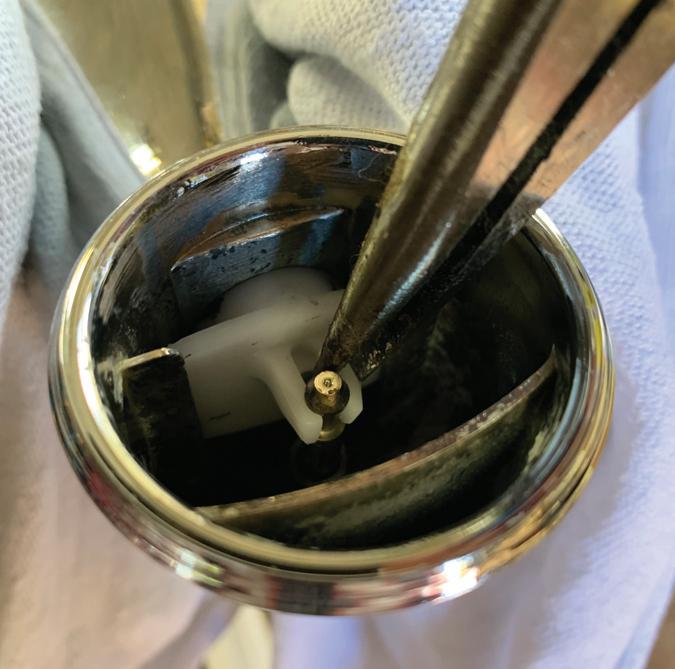
9 10


11 12 13


Handy Clog-Clearing Tool
Available at most hardware stores, this inexpensive plastic plumbing auger is one of the best $3 or $4 purchases a DIY homeowner is apt to make. The augers are hooked to grab hair and gunk, stiff enough to shove through a pipe, but flexible enough to follow the turns in a P-trap or S-trap. Just unscrew the drain cap to gain access to the opening, then run the auger repeatedly down the pipe along all sides, and rotate the tool as you do. I’ll spare you a photo of the Lovecraftian horror I extracted from the clogged pipe, but take my word for it—these things usually get the job done. - M. Weber
